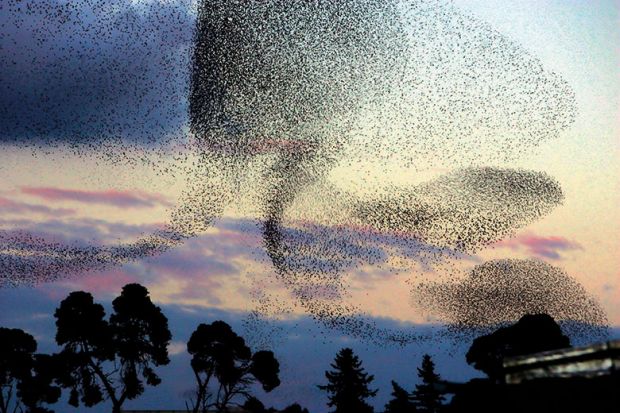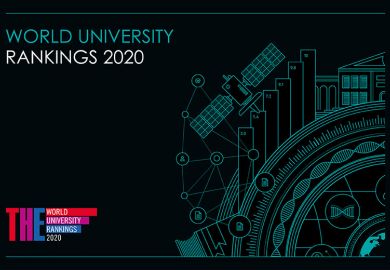Browse the full results of the World University Rankings 2020
When looking at the results of the Times Higher Education World University Rankings, it can be easy to focus on the movement of individual institutions or countries. It can be more difficult, however, to ascertain how different types of universities are performing, or indeed how to group institutions into families that share key defining attributes and qualities.
But the latest analysis of the different “academic clusters” in the THE World University Rankings, and how these have changed over time, reveal some interesting trends about the shifting characteristics of certain types of institutions.
The clusters – which THE ’s data team identified by mapping institutions’ citation scores and reputation votes across 11 subject areas – range from “old stars” (which have the strongest academic reputations and broadest citation impact across disciplines), through to up-and-coming groupings such as the “international powerhouse” universities , the “life science challengers” and the “technology challengers” as well as those in the “core strengths” cluster (which have solid research profiles but do not have a high profile in academic circles).
The 2020 rankings data show that just two universities moved from the international powerhouse group to become old stars this year: the US’ Cornell University and the National University of Singapore (NUS).
International powerhouse universities tend to show slightly more expertise in clinical subjects than their peers in the old stars category, and slightly less prowess in the arts, and they generally do not have the same broad recognition across many areas of expertise as old stars.
Tan Eng Chye, president of NUS, which is the first Asian institution to join the old stars group, says the university “strives to be innovative in whatever we do”.
“We believe that effective solutions to complex challenges, such as healthcare, sustainability or digitalisation, require a multidisciplinary and multisectoral approach,” he says.
“Because of this, we work hard to create an environment that enables our teaching faculty and researchers to do their best work, and to collaborate across disciplines, industries and borders. This is why, in 2018, researchers from institutions and organisations from 145 countries collaborated with NUS.”
NUS actually slipped two places to 25th this year, driven by a dip in its citation impact score, but the university’s research and teaching reputations both improved this year.
Tan says he is “heartened by the growing recognition of our teaching and research, and [to see] that NUS is considered to be aligned with the world’s top universities”. But, he adds, “there is still much to be done” at the institution.
“Even as we continue to strengthen our teaching, research and entrepreneurship, we aim to develop new solutions in the area of lifelong education to address the challenges brought on by the changing nature of jobs and disruption in higher education,” he says.
Several institutions have managed to rise out of a “challenger” group to become an international powerhouse.
One is the University of Colorado Boulder, which was formerly a “life science challenger” – a cohort characterised by a focus on the life sciences and clinical subjects, as reflected in their high research and citations scores. International powerhouse universities tend to be even stronger when it comes to citation impact, which can have a knock-on effect in bolstering reputation.
CU Boulder’s research reputation and research income scores both improved this year.
Philip DiStefano, chancellor of the institution, says its international reputation is growing in part because it “actively recruits and works to provide a supportive environment to some of the most highly skilled and accomplished academics and scientists working in their fields today”.
The university also partners with several national research laboratories based in Boulder and with tech industry giants that have satellite offices in the city, which helps boost its income.
“As a result of their work and these partnerships, our faculty continue to secure substantial research funding from the National Science Foundation, the National Institutes of Health and other federal agencies. In turn, their work is drawing some of the brightest students to our campus,” DiStefano says.
Over the past five years, CU Boulder’s research has had a $1.2 billion (£1 billion) impact on the state of Colorado, he points out.
Meanwhile, in recent years, the university has “reinforced the idea that all of us – students, faculty, staff and campus leadership – are part of our larger story as a public research university that puts a premium on innovation, leadership and work that positively impacts humanity”, DiStefano adds.
“Altogether, it’s our people, our location and the work that is taking place here that continue to attract highly motivated faculty, researchers and students from Colorado and around the world.”
The University of Helsinki is also a new powerhouse member, having moved out of the life science challengers group. The institution rises three places to joint 96th in this year’s overall global ranking, achieving higher scores for research reputation and citation impact.
Paula Eerola, vice-rector at Helsinki, says that all four of the institution’s campuses have research units with “outstandingly strong research”, according to an external review. She attributes this to the university’s “lasting commitment to research excellence and strong international partnerships as a founding member of the League of European Research Universities”.
The university has also recently launched new multidisciplinary research institutes, which have helped to increase its international visibility and to attract world-class researchers to Helsinki, Eerola adds.
In Australia, Monash University has also shifted out of the life science challengers group to become an international powerhouse. The institution climbs nine places to joint 75th in this year’s ranking, thanks to boosts to its research and teaching reputation scores.
Margaret Gardner, president and vice-chancellor of Monash, says “recognition of Monash as an emerging global powerhouse that is competing with long-established institutions is a testament to the university’s high-calibre research and educational leadership”.
“Monash is highly regarded for its solution-focused research into major global issues, such as the provision of clean water, long-term planetary health and the eradication of mosquito-borne diseases,” she says.
“We have grown our international partnerships with universities and industry, and developed our offshore campuses into an extensive global research network that enables complex, multidisciplinary projects to have positive impact on communities around the world.”
She adds that students at Monash enjoy the opportunity to engage directly with these networks and “can immerse themselves in global study experiences”.
“They leave Monash with a qualification recognised for its international relevance,” she says.
Old Stars: ranked by overall score in World University Rankings
|
World rank 2020 |
University |
Country/region |
|
1 |
United Kingdom |
|
|
3 |
United Kingdom |
|
|
4 |
United States |
|
|
5 |
United States |
|
|
6 |
United States |
|
|
7 |
United States |
|
|
8 |
United States |
|
|
9 |
University of Chicago |
United States |
|
=13 |
United States |
|
|
15 |
UCL |
United Kingdom |
|
16 |
United States |
|
|
17 |
United States |
|
|
18 |
Canada |
|
|
19 |
United States |
|
|
21 |
United States |
|
|
25 |
Singapore |
|
|
29 |
United States |
Register to continue
Why register?
- Registration is free and only takes a moment
- Once registered, you can read 3 articles a month
- Sign up for our newsletter
Subscribe
Or subscribe for unlimited access to:
- Unlimited access to news, views, insights & reviews
- Digital editions
- Digital access to THE’s university and college rankings analysis
Already registered or a current subscriber? Login






